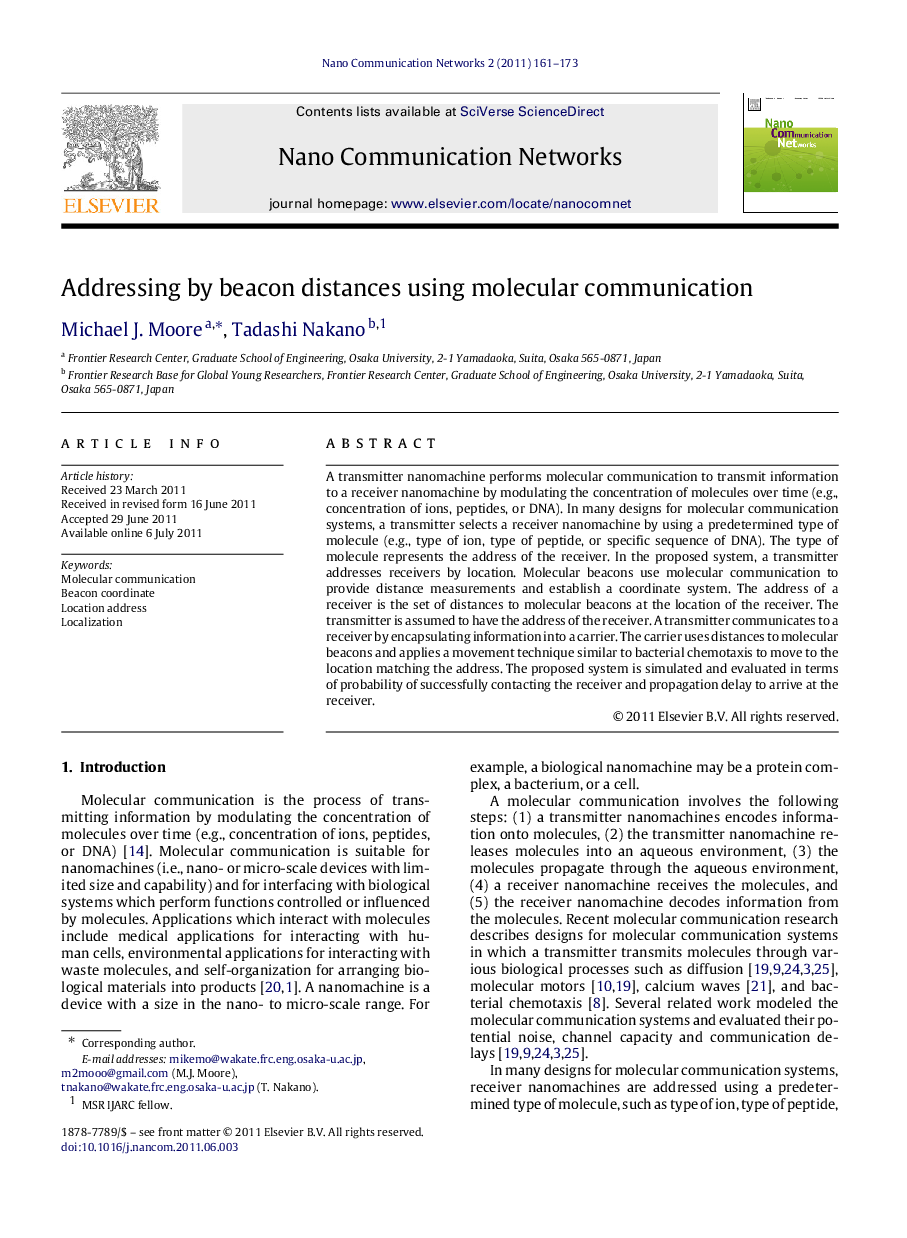| Article ID | Journal | Published Year | Pages | File Type |
|---|---|---|---|---|
| 462328 | Nano Communication Networks | 2011 | 13 Pages |
A transmitter nanomachine performs molecular communication to transmit information to a receiver nanomachine by modulating the concentration of molecules over time (e.g., concentration of ions, peptides, or DNA). In many designs for molecular communication systems, a transmitter selects a receiver nanomachine by using a predetermined type of molecule (e.g., type of ion, type of peptide, or specific sequence of DNA). The type of molecule represents the address of the receiver. In the proposed system, a transmitter addresses receivers by location. Molecular beacons use molecular communication to provide distance measurements and establish a coordinate system. The address of a receiver is the set of distances to molecular beacons at the location of the receiver. The transmitter is assumed to have the address of the receiver. A transmitter communicates to a receiver by encapsulating information into a carrier. The carrier uses distances to molecular beacons and applies a movement technique similar to bacterial chemotaxis to move to the location matching the address. The proposed system is simulated and evaluated in terms of probability of successfully contacting the receiver and propagation delay to arrive at the receiver.
